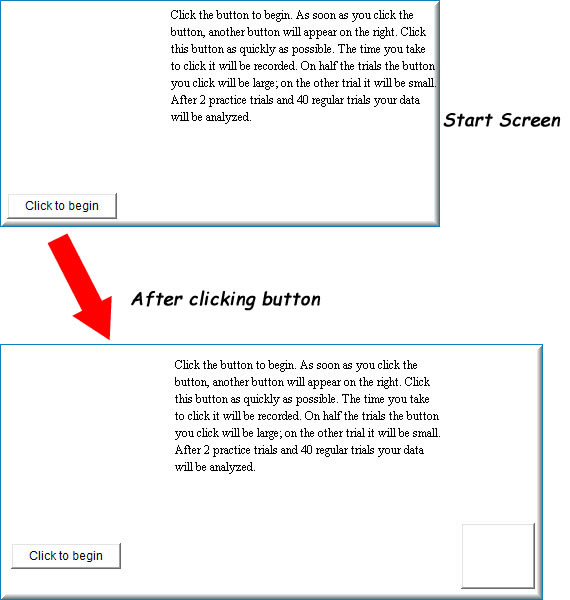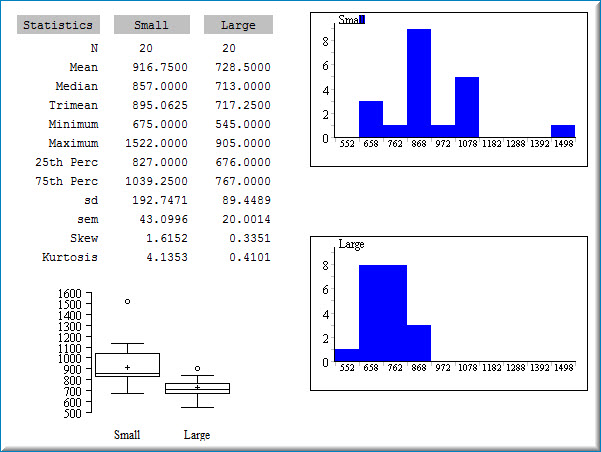3.16: Demostración Comparativa de Distribuciones
- Page ID
- 152245
Objetivos de aprendizaje
- Aprenda cómo se pueden comparar los datos de dos distribuciones
Instrucciones
Esta demostración recopila datos de tiempo de respuesta de usted y computa diversas estadísticas descriptivas. También muestra histogramas y diagramas de caja. Después de hacer clic en el botón para comenzar, aparecerá un rectángulo a la derecha del botón. Mueva el cursor al rectángulo y haga clic en. Se registra el tiempo que lleva hacer clic en el rectángulo. La mitad de las veces el rectángulo es pequeño y la mitad del tiempo es grande. Después de dos ensayos de práctica y ensayos\(40\) regulares, se mostrarán las estadísticas descriptivas y gráficas.
Instrucciones ilustradas
La simulación se inicia haciendo clic en el botón en la parte inferior izquierda de la pantalla. Al hacer clic en este botón se inicia una serie de pruebas donde aparece otro botón a la derecha y se le pedirá que haga clic en este botón lo más rápido posible.

La mitad de los botones serán grandes y la mitad serán pequeños. Una vez que complete las\(40\) pruebas, la simulación le mostrará estadísticas descriptivas sobre los datos del tiempo de reacción para cada tamaño de botón (vea la captura de pantalla a continuación).



